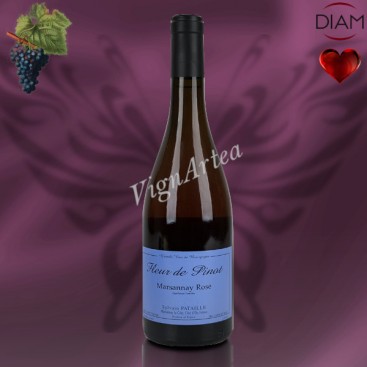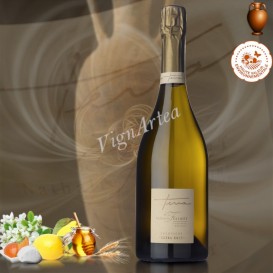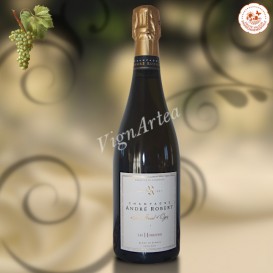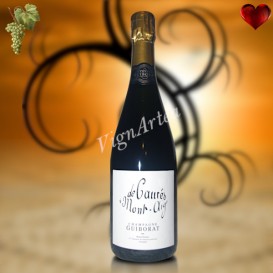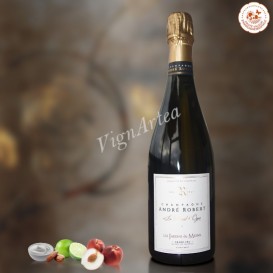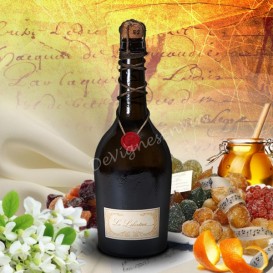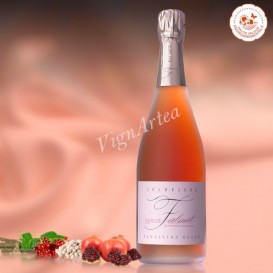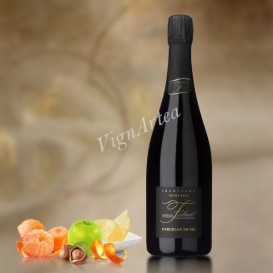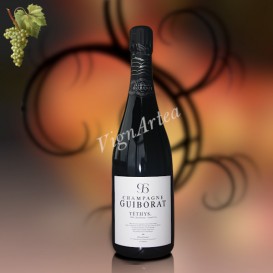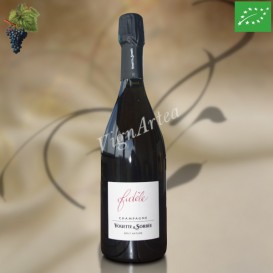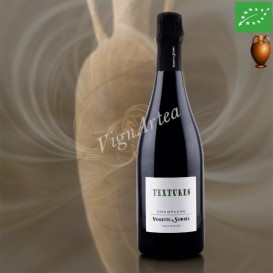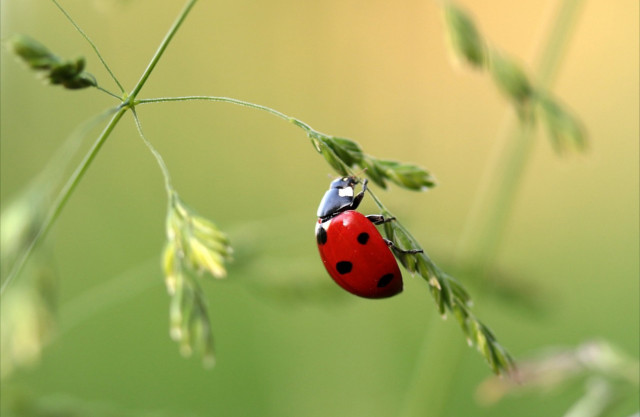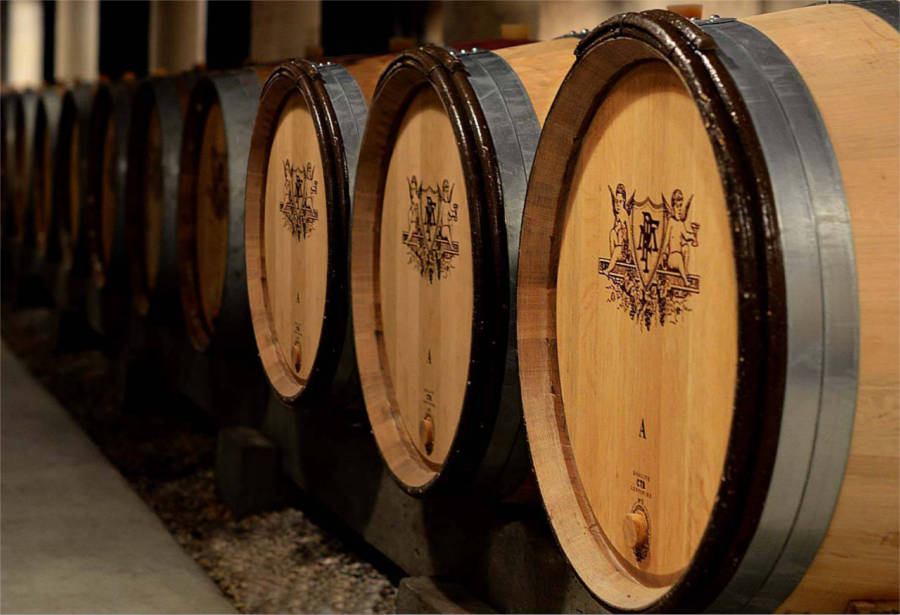FLEUR DE PINOT 2022 (Domaine Sylvain PATAILLE)
BOURGOGNE - AOP MARSANNAY - ROSÉ WINE
Grape variety: Pinot Noir (100%)
Organic Native yeasts DIAM18® cork stopper
Ageing in oak barrels & demi-muid (33% of new demi-muid) & stainless steel tanks for 24 months
Complex - Rich - Tasty
- Nose: intense and atypical. Slightly resinous notes that open onto raspberry and blackcurrant aromas, with a hint of kirsch.
- Palate: supple, tasty and plump. Cherry liqueur finish. Long-lasting aromas.
Tasting date: January 2025.- OUR OPINION: superb, a total success! This vintage is very complex, it is reminiscent of the Rosé des Riceys, with a lot of charm and character. A great rosé, ❤️ guaranteed favourite! ❤️
The exceptional bottle's weight (1.8kg) may result in higher shipping costs for the final shopping cart.
TERROIR
The FLEUR DE PINOT is a rosé wine made from vines planted in 1932, 1934 and 1949. It is also a blend of three different climates having three very distinct terroirs:
-
The climat La Charme Aux Prêtres situated at an altitude of between 280 and 320 metres. Facing south/south-west, the plots have a soil of Ostrea Acuminata marl dating from the Bajocian period (-171 to -167 Ma), a geological period of the Middle Jurassic. These marls are about 15 metres thick and were deposited in a calm marine environment, like an oyster bed, which explains the presence of Ostrea Acuminata, small fossilised oysters.
-
The plots of the Les Champ Forey climate are composed of cone gravel dating from the last glacial period of the Quaternary period, 20,000 years ago: gravel, pebbles and boulders originally coming from the plateaus and transported by ancient rivers during successive freeze/thaw episodes accumulated at the exit of the combes.
-
The terroir of the En Blungeys parcel is composed of an oolitic limestone soil dating from the Bajocian period (-171 to -167 Ma). This limestone formation, white in colour and with a carbonate content close to 100%, comes from an accumulation of small millimetre-sized spheres called oolites, which correspond to quartz debris or fragments of shells rolled by the waves.
These oolites were formed in a more or less agitated, warm and relatively shallow marine environment (0 to 15-20 metres maximum).
WINEGROWING & WINEMAKING
The estate has been working in accordance with the organic farming specifications since 2008 but it lost its certification in 2016 in order to save its crops. It will get it again with the 2020 vintage, which is why the 2017 and 2018 vintages do not carry the official Organic label.
After harvesting, the grapes are taken to the winery where they are carefully sorted. About half of the grapes are pressed by direct pressing while the rest undergoes a short skin maceration before being pressed by direct pressing.
The alcoholic and malolactic fermentations are carried out without yeast (indigenous yeasts and bacteria).
The must is then matured in oak barrels, half-muids (33% of them are new) and stainless steel vats for 24 months. No sulphits are added during the vinification process.
At the end of the ageing period, the must is racked without fining. If necessary, it is lightly filtered by lenticular filtration. A light sulphiting is then carried out during bottling.
The bottle is closed by a cork of the DIAM®'s brand, specially designed to guarantee zero wine's contamination by the cork, called "cork taste", thanks to the use of the cork flower previously cleared from the molecule responsible for this aromatic deviance.
| Country | Burgundy |
| Color | Rosé |
| Orange wines | No |
| Clay amphorae wines | No |
| Type | Dry |
| Capacity | 2022 |
| Single Grape Variety | Pinot noir |
| Alcohol rate | 13 % |
| Quality Designation | Marsannay |
| Cellar Potential | 10 years |
| Service advise | 12°C (54°F). Open 1/4hr before the service. |
| Culture Methods | Non-certified Organic culture |
| Fining | No |
| Filtering | Yes |
| Comments | 50% direct pressing - 50% short maceration. Fermentation with indigenous yeasts. Ageing phase of 24 months in oak barrels, demi-muids (33% new) and vats. |
| Stopper | Diam |

